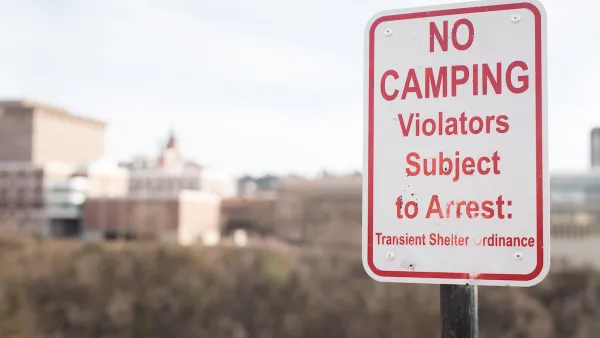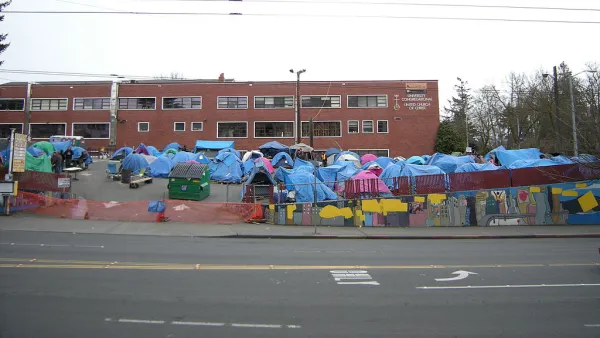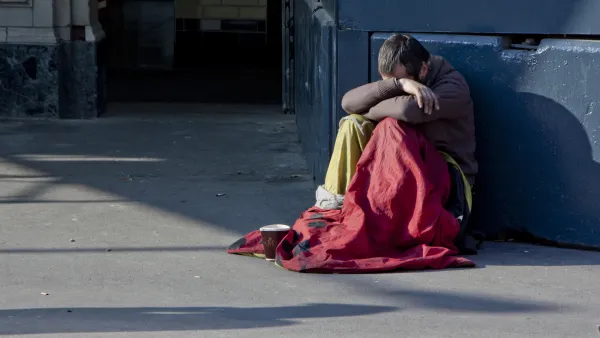A report released today shows that the federal government has been effective in reducing homelessness over the last several years, but will fall short of goals for eradicating homelessness among the most vulnerable populations.
First the good news. Annie Lowrey dicusses the conclusions of an annual report to Congress prepared by the that shows, "[t]he number of chronically homeless people — a particularly at-risk population often in need of mental and physical health services and other safety-net support — fell about 7 percent in 2011 and more than 19 percent since 2007. Homelessness among veterans declined more than 7 percent in 2011 and 17 percent since 2009."
Against the backdrop of the Great Recession, these gains are particularly impressive. "Indeed," says Lowrey, "the number of people counted as homeless has fallen for four out of the past five years. It is now about 6 percent lower than it was five years ago. Many poverty experts anticipated that homelessness would increase during the recession, and many were surprised that it did not."
Despite the gains, goals established in 2010 by the United States Interagency Council on Homelessness to end chronic and veteran homelessness by 2015, and homelessness among families, the young and children by 2020 are unlikely to be met. “They have set ambitious goals for themselves, but I don’t think those are goals that aren’t doable,” said Nan Roman, the president of the National Alliance to End Homelessness. “But not at the rate that we’re going.”
A least part of the reason for the recent declines can be attributed to a $1.5 billion infusion of federal stimulus money that is estimated to have "prevented or ended homelessness for more than one million people." However, notes Lowrey, "with emergency stimulus financing at its end, experts worry that homelessness might increase for some vulnerable groups in the coming year."
FULL STORY: Homeless Rates in U.S. Held Level Amid Recession, Study Says, but Big Gains Are Elusive

Analysis: Cybertruck Fatality Rate Far Exceeds That of Ford Pinto
The Tesla Cybertruck was recalled seven times last year.

National Parks Layoffs Will Cause Communities to Lose Billions
Thousands of essential park workers were laid off this week, just before the busy spring break season.

Retro-silient?: America’s First “Eco-burb,” The Woodlands Turns 50
A master-planned community north of Houston offers lessons on green infrastructure and resilient design, but falls short of its founder’s lofty affordability and walkability goals.

Test News Post 1
This is a summary

Analysis: Cybertruck Fatality Rate Far Exceeds That of Ford Pinto
The Tesla Cybertruck was recalled seven times last year.

Test News Headline 46
Test for the image on the front page.
Urban Design for Planners 1: Software Tools
This six-course series explores essential urban design concepts using open source software and equips planners with the tools they need to participate fully in the urban design process.
Planning for Universal Design
Learn the tools for implementing Universal Design in planning regulations.
EMC Planning Group, Inc.
Planetizen
Planetizen
Mpact (formerly Rail~Volution)
Great Falls Development Authority, Inc.
HUDs Office of Policy Development and Research
NYU Wagner Graduate School of Public Service




























